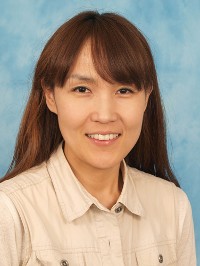Assessment of the effectiveness of Seoul Metropolitan Area’s Air Quality Management Plan
Introduction
Special attention is needed to air pollution in and near megacities because of their high population density and associated impacts. Korea has ambitiously put in place the second phase (2014-2015) of an air quality improvement program for the capital and surrounding areas: the Seoul Metropolitan Area (SMA) Air Quality Management Plan (SAQMP). The air quality improvement targets for 2024 are 30 μg/m3 and 20 μg/m3 for PM10 and PM2.5, respectively; thus, emissions of PM10 and PM2.5 need to be decreased by up to 35% and 45%, respectively, from their future baseline level. This research investigated the effectiveness of the SAQMP using the GAINS-Korea framework which is under development at IIASA. The analysis includes various special measures, such as cap and trade and the Euro air quality standards programs, which have been implemented to control emissions over the Seoul metropolitan area.
Methodology
GAINS-Korea has been developed using GAINS modeling framework which is widely used to design and manage smart emission control strategies able to achieve air quality/climate improvements at least cost. To assess the effectiveness of the SAQMP policy measures, four different control scenarios were analyzed, as follows:
Sce1, NFC2010: No further control after year 2010. All controls will be phased out as their life time is reached.
Sce2, CLE2010: Maintain 2010 level of control until 2025. No more control policies/devices will be introduced.
Sce3, SAQMP: Implement all planned control policies and technologies in SAQMP 1st + 2nd until 2025.
Sce4, MFR2025: Maximum Feasible Reduction by 2025. More stringent controls will be installed and more stringent control policies will be introduced.
The GAINS model can assess the impact of emission reductions of sources on air quality in receptor regions based on the Source-Receptor (S-R) matrix, derived from a chemical transport model. To develop the S-R matrix for GAINS-Korea, the CAMx model with PSAT/OSAT tools was applied in this study for January 2005.
Results and Conclusions
The emissions under the four scenarios in the base year (2010) and future years (2015, 2020, and 2025) were estimated. In 2025 emissions of primary PM2.5 will change by 6 (38%), 2 (10%), -5 (-33%), -8 (-50%) ktons/year compared with the base year for the NFC2010, CLE2010, CLE2025, and MFR2025 scenarios, respectively. The results of emissions for the other air pollutants (PM10, NOx, SO2, and VOCs) are similar to those for PM2.5. For SAQMP, the scenario was evaluated to meet the target emission reductions, except in the case of VOCs, where the scenario indicates that fugitive pollutants such as VOCs and fugitive dust need additional controls. The MFR2025 scenario showed a significant potential to reduce NOx, SO2, PM10, PM2.5, and non-methane VOC emissions by up to 71%, 54%, 44%, 50%, and 57%, respectively, from the baseline projection. The PM2.5 air quality from the S-R analysis shows a reasonable range of 14.9~36.4μg/m3, with 77% of the in-region contribution of the SMA. For 2025 air quality can be transformed to 38.3 μg/m3, with 80% of SMA contribution in NFC2010 or to 33.4 μg/m3 with 64% of the SMA contribution. Not only in-region efforts but also international cooperation should be important here because outside the SMA region the contribution of PM2.5 is more than 70% in the January 2005 case.
Supervisor
Young-Hwan Ahn, Mitigation of Air Pollution and Greenhouse Gases, IIASA
Note
Younha Kim of the Konkuk University, Seoul, Republic of Korea is a citizen of the Republic of Korea. She was funded by IIASA’s National Member Organization of the Republic of Korea and worked in the Mitigation of Air Pollution & Greenhouse Gases (MAG) Program during the YSSP.
Please note these Proceedings have received limited or no review from supervisors and IIASA program directors, and the views and results expressed therein do not necessarily represent IIASA, its National Member Organizations, or other organizations supporting the work.


